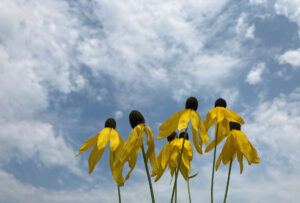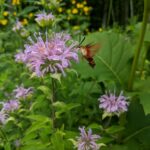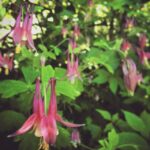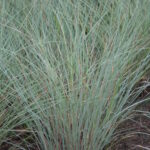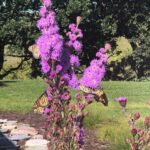A pollinator seed mix is a wonderful way to get started with adding more native plants to your yard! Planting a pollinator seed mix adds more flowers for you to enjoy, while creating more habitat for our beloved pollinator species at the same time!
Pollinators are anything that helps carry pollen from one part of a flower to another (or from one plant to another plant of the same species). Common examples of pollinators here in the upper Midwest are bees, butterflies, birds, bats and several other creatures. Some pollinators move pollen intentionally (like bees, who collect it), and others brush against it with hairs while collecting nectar or visiting other parts of the plant. The process of pollination helps plants produce seeds to grow new plants.
Creating a seed mix that attracts and benefits pollinators means creating a diverse seed mix with a lot of different blooms. We want to incorporate many shapes of flowers, different colors, wide ranging bloom times, and many other considerations. For us humans, this means a lovely looking garden with flowers in the spring, summer, and well into the fall.
MNL has developed pollinator seed mixes for use in multiple areas of your yard, with our most popular option being our MNL Pollinator Mix for Dry to Mesic (dry to medium) soils. For advice on getting started with planting a pollinator mix, check out our how to video.
If you think you\’d rather start with live plants for faster establishment, we have advice for that as well! Starting with MNL\’s plant kits is a great option, just keep in mind that you want to mix as many different species as budget allows. Do this by combining multiple kits, or selecting your own species with our build-a-kit tool. Remember, its ideal to have at least 3 different species of spring, summer, and fall blooming plants for a total of at least 9 different species in a pollinator garden. Don\’t forget the native grasses too! Did you know that native grasses help pollinators as well? Grasses provide shelter, a place to perch and rest, hollow stems for cavity nesters, and they help hold flower stems upright keeping the pollen easily accessible to busy bees and butterflies. Group plants of a species together in clusters of 3 to help pollinators work more efficiently, and evenly space native grasses amongst taller flowers to help hold the stems upright. For garden design aesthetic, plant taller plants in the middle or back of the planting area with shorter height plants in the front.
As always, you can always ask for help on the MNL website chat during business hours, just click the message box in the lower righthand corner.

